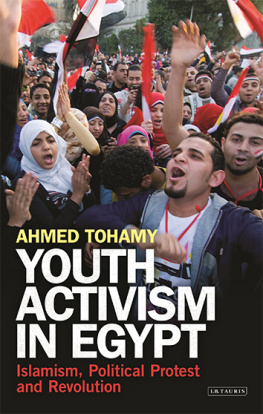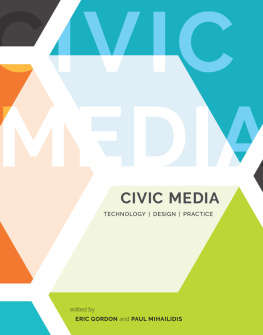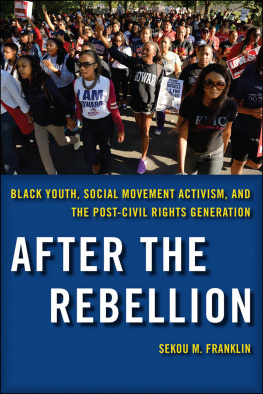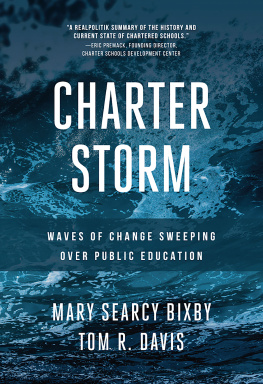Between Movement and Establishment
Organizations Advocating for Youth
Milbrey McLaughlin
W. Richard Scott
Sarah Deschenes
Kathryn Hopkins
Anne Newman
Stanford University Press
Stanford, California
2009 by the Board of Trustees of the Leland Stanford Junior University. All rights reserved.
No part of this book maybe reproduced or transmitted in any form or by any means, electronic or mechanical, including photocopying and recording, or in any information storage or retrieval system without the prior written permission of Stanford University Press.
Printed in the United States of America on acid-free, archival-quality paper
Library of Congress Cataloging-in-Publication Data
Between movement and establishment: organizations advocating for youth / Milbrey W.
McLaughlin ... [et al.].
p. cm.
Includes bibliographical references and index.
9780804776295
1. YouthGovernment policyCaliforniaSan Francisco. 2. YouthGovernment
policyCaliforniaOakland. 3. YouthServices forCaliforniaSan Francisco.
4. YouthServices forCaliforniaOakland. 5. Pressure groupsCaliforniaSan
Francisco. 6. Pressure groupsCaliforniaOakland. I. McLaughlin, Milbrey Wallin.
HQ796.B434 2009
362.7dc22
2008054139
Typeset by Thompson Type in 10/14 Minion
Acknowledgments
MANY PEOPLE MADE IMPORTANT and essential contributions over the course of this project. Primary financial support came from the Evelyn and Walter Haas Jr. Fund. Sylvia Yee and Cheryl Rogers of the Haas Jr. Fund have been enthusiastic about the project from the beginning; their direct appreciation of the critical role played by organizations advocating for youth grounded this study. A grant from the Spencer Foundation enabled us to complete our field research and writing. Conceptualization of our research benefited enormously from previous scholarship on local youth advocacy efforts and urban politics, most particularly that of Xavier de Souza Briggs, Dennis Shirley, Clarence Stone, and Mark R. Warren.
This project would not have been possible, of course, without the interest and generous cooperation of people involved with and knowledgeable about the conditions for youth in San Francisco and Oakland, CA (see Appendix). The many individuals involved in organizations advocating for Bay Area youth welcomed us into their organizations and their personal files and experiences. Their perspectives on and commitment to the well-being of urban youth form the core of this book. Deborah Alvarez-Rodriguez and Michael Wald helped us understand the broader Bay Area political and cultural contexts.
Research by Stanford colleagues Denise Gammal and Walter Powell expanded our thinking about nonprofits and understanding of the broad Bay Area nonprofit sector. Elisabeth Hansot and David Tyack generously reviewed multiple drafts of this manuscript. Their insightful comments always were right on target, and we benefited greatly from their willingness to talk through sticky issues and fuzzy arguments until clarity emerged. The helpful suggestions of several anonymous reviewers also improved this book. We are deeply grateful to all of you.
Introduction
ORGANIZATIONS THAT ADVOCATE for urban youth can play a critical role for this vulnerable population. Youth growing up in the nations big cities confront the same developmental tasks as do American youth everywhere. They must acquire the social skills, personal attitudes, and intellectual competencies that will carry them to successful adulthood. But too many urban youth must accomplish these goals in the context of deeply flawed institutions. The child poverty rate in the nations large cities stands at 26 percent, well above the national child poverty rate of 17 percent, and 45 percent of urban youth live in families where no parent has full-time, year-round employment (Annie E. Casey Foundation 2004). Urban youth are more likely than nonurban youth to spend time in the foster care and juvenile justice systems or to live in zero-parent families. Data on every measure of child well-beingpoverty, education, family supports, health, teen pregnancies, teen death rate, housingindicate that too many young people living in Americas large cities lack the opportunities and resources they need to become successful workers, parents and citizens (Annie E. Casey 2004, 2008; National Research Council and Institute of Medicine 2002).
The relative powerlessness of young people growing up in urban America means that more or different resources are not enough to address these challenges. Political and civic will are required as well. Unlike youth growing up in the suburbs, many urban youth have no effective parent advocate. And even when city parents have access to decision makers and time to represent their childrens interests, they make up only a small segment of the electorate. Only around 15 percent of adult residents in the nations urban centers have children in the public school system, and so big cities voting population has scant direct investment in education and youth services. The interests of urban youth must compete for attention on a civic agenda with issues more compelling to voterssuch as municipal transportation and public safety.
Without effective political activism dedicated to their interests, urban youth are likely to lose in the competition for community resources. Moreover, many urban voters have few positive connections to youth. They encounter the young people in their community only as fleeting faces on the evening news in stories of gang violence, or in statistics reporting school failures, teen pregnancy, or drug abuse. Negative media representation of urban youth as social problems to be managed aggravates the already difficult task of responding to their needs and improving the deficiencies in their institutional setting.
Antecedents to This Study
As often is the case, past research lays the groundwork for future investigation. This project grew from puzzles and questions prompted by three lines of our previous research, inquiries that were not explicitly related to one another but were mutually informative and generated new questions. One involved research into social policy implementation; the second examined the role of community-based organizations in the lives of urban youth; and a third the levers for and constraints on institutional change. We briefly highlight these three lines of inquiry, which together shape our investigation into how advocacy organizations can improve conditions for urban youth.
Policy Implementation
Research into policy issues, most particularly in education, taught that usual debates about top-down or bottom-up policy change largely misunderstand differences between macro level influences and levers and micro level opportunities for action (McLaughlin 1987, 2006; Scott & Meyer 1991). Differences among scholars typically center on which level of the system is more importantwhich has moral primacy and legitimate authority for action and is substantively prior (Lawlor, Ridgeway, & Markovsky 1993; Munch & Smelser 1987). These academic debates, primarily among sociologists, obscure two important points. One is that macro and micro levels of action are mutually contingent. Macro level policies both influence and depend on what happens on the ground. A second essential point is that micro is not a small macro. So-called backward mappers, policy analysts who followed policy trails and consequences from the bottom to the top of the implementing system, framed their investigations in macro terms of policy tools and expectations. But macro and micro level actors have different keyboards at their disposal. Macrolevel tools are the relatively blunt technical tools of policy; micro-level tools are adaptive and shaped by their specific contexts. Further, at the level of practice, important elements shaping implementation include those outside the formal policy systemsuch as community-based organizations, civic leaders, and community activists. Consideration of how policy choices are made and carried out at the local level requires a broader lens, one that looks beyond formal policy instruments and mandates to a view that better captures the nonsystem actors responsible for local preferences and implementation choices.








